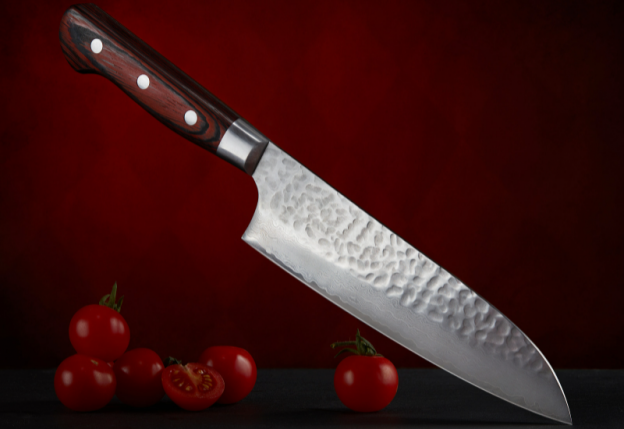Sushi is one of Japan’s most famed hand-crafted dishes and a culinary delicacy loved by gourmets and diners from all parts of the globe for its ‘originality’ that blends and combines the variety of flavors together. In unique ways, most diners enjoy raw Salmon sushi, Fatty Tuna sashimi, and other authentic Japanese delicacies compared to commercialized dishes and fast food. Sushi and sashimi dishes are also the top two most-loved delicacies with amazing, social media-friendly aesthetics, included as signature menus in specialty restaurants known as ‘Omakase’ restaurants.
As these Japanese delicacies are loved for their intricate nature and uniqueness in vast selections of ingredient choices, diners from all over the world are intrigued by the complicated processes, the mastery of the blades, and the traditional techniques that result in unique flavor blends. Behind the mouth-watering Japanese delicacies lies the exceptional skills of using the knife to slice, cut, mince, chop, bone, and fillet a wide variety of ingredient selections.
Using a Japanese knife is not a simple task – a Japanese knife has a distinct blade body made out of high-quality hard steel which enables it to perform intricate techniques. Despite its beautiful build, unique features, and the capabilities to do either general or specific tasks, a Japanese knife is also often a valuable item for collectors and culinary experts. To buy a Japanese knife, it is highly important to scan through all the features, what it can do, and see if the knife fits your needs. Whether it is for collecting or to make hand-crafted Japanese delicacies, it is best to first know what a knife can do.
Appearance
Although a knife is required in the kitchen to cut, slice, chop, fillet, and bone fresh, caught-from-sea fish and seafood, a Japanese knife is also well-known for its unique appearance. Japanese knife is among one of the most valuable items among a collection of blades, as it also represents Japan’s culinary traditions. The unique, sleek body of the Yanagiba, the strong build of a Gyuto, and the embossed textures of some Damascus steel blades paved way to the fame Japanese knives earn from collectors in different parts of the world. The Japanese traditional designs like Sakura flowers, firecrackers, dragons, and drops of beating rain also portray the mesmerizing beauty of Japanese culture. The handles are also made of high-quality materials to match the blade styles – Magnolia wood, Oak wood, high-quality resin, or Ebony.
Ability
Japanese knives are exclusively made to serve the purpose of hand-crafting culinary delicacies. Sushi and sashimi are two delicate dishes that require great attention, which is why a Japanese knife is needed to perform traditional techniques and challenging tasks a general kitchen knife cannot do. Japanese knives are made of exceptionally hard steels of fine quality like those of high prime carbon, Damascus, W2, Super Gold, Aoko blue steel, and white steel. Hard steels enable knife users to cut through dense ingredients and are what promotes the durability of Japanese blades. Each Japanese knife is forged for different reasons, as they perform various tasks.
A Yanagiba, for example, is forged to especially make sashimi dishes and make perfect slices of seafood slices topped on cooked, Japanese rice. A Gyuto knife, on the other hand, is a multi-tasking kitchen knife that can perform a wide variety of tasks, be it cutting, slicing, boning, or filleting. Although Gyuto isn’t a specialty knife, but a knife for general use, it also is one of the most well-known Japanese knife types loved by knife users and culinary experts from all parts of the world.
As Japanese knives are not only tools for the crafting of Japanese dishes but also items worth having in collection, people from different parts of the globe put these blades on the pedestal for the beauty, the capabilities, and the quality they provide.
